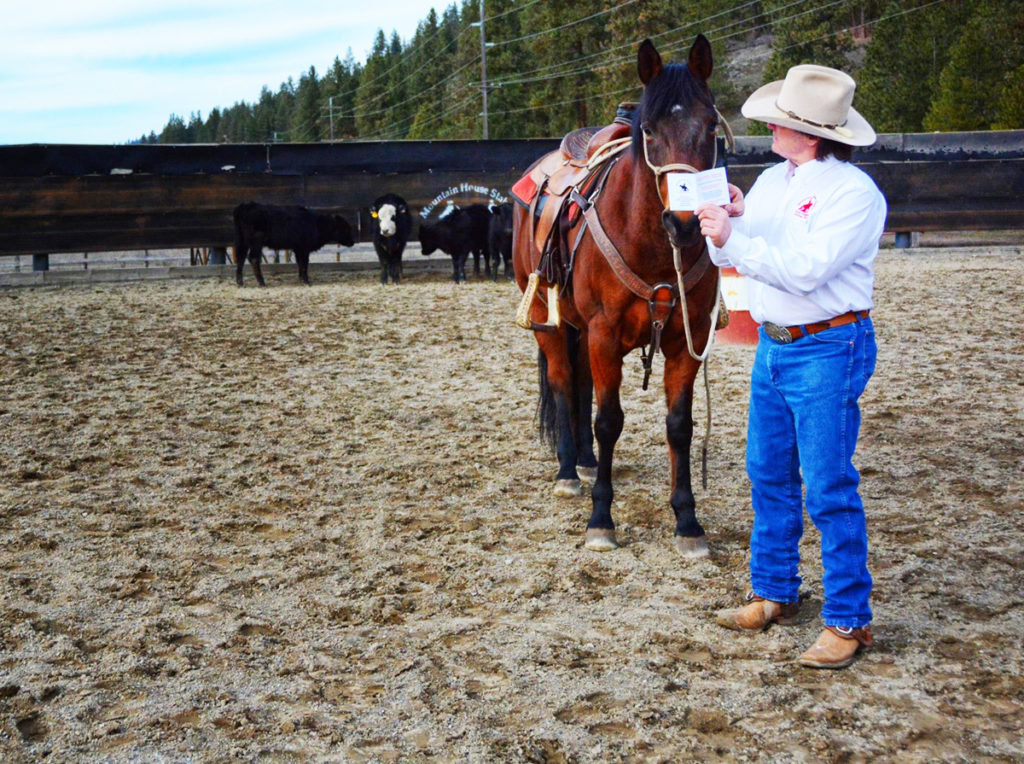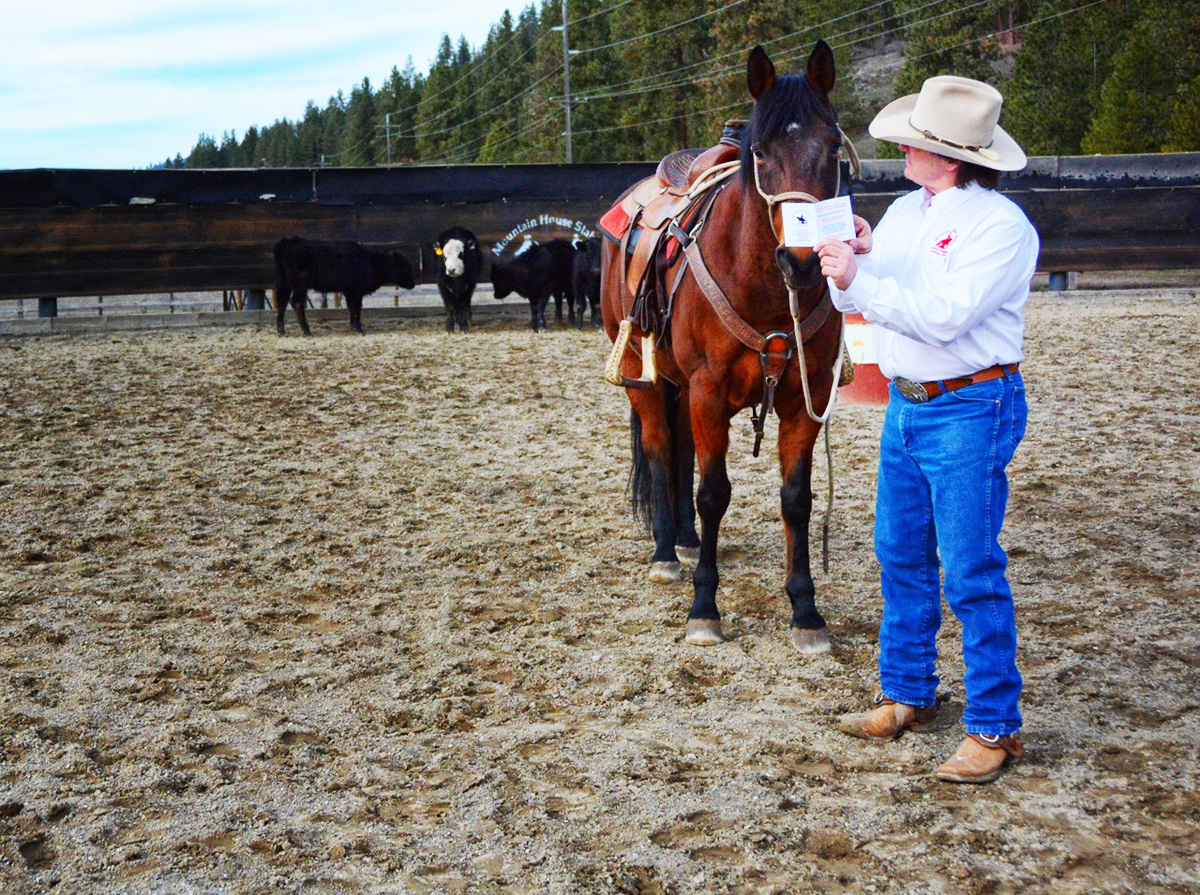Part 4: Create a Pilot’s Checklist to Develop Your Program
By: Gerry Cox

I am a continuing student trying to become a better horseman. I have learned over the years the importance of a routine, or program, that works for me and my horse. Many years ago I had the privilege of riding with a very talented reining trainer named Abby Cosenza. Riding with horsemen of her caliber gives us some insight on how they got there.
While riding with Abby we worked on warm-up drills each morning: move the hips, move the shoulders, back up, counter-bend, back in circles, lope in circles, and so on. On our third day Abby told me, “Okay, go do our warm up routine.” I did some flexing, backed a circle, loped a circle, did a counter bend, but in no specific order.
Abby then handed me a 3×5 index card and a pen and said, “Write this down.” She showed me a beat up and tattered index card that she carried in her pocket – her pilot’s checklist. Once she began to explain the sequence of drills it all began to make sense. There was a rationale for doing things in a specific order—get control of the hips (the power source), then the shoulders for steering, then the neck for guidance, then the body—using drills but in a very precise, rational order.
Over the years I have developed my own pilot’s check list, a card I carry in my pocket and pass out to my students. It starts out with a series of 12 ground drills done in a specific sequence. Then I go to 12 saddle drills, again in a specific sequence. After all of the warm-up drills are done, I go ride my horse. The point of this article is to consider developing a routine so our horse can learn in a sequence; that way we set him up for success. We need to know what we are going to do before we do it.
If I don’t spend the time to teach my horse to move his hip, I cannot teach him a good lead departure, which requires me to place his hip to the inside. I cannot teach him to roll back if I have not taught him how to move his shoulders. I need to take the time to teach him each part of each maneuver. If I have a routine—a pilot’s checklist—it will ensure I cover the necessary elements to achieve these goals.
Know what you are going to do before you do it.
Just the other day a lady who was riding at our barn asked me to help her get her horse to travel a cleaner circle. She loped off and attempted to maintain a 40-foot circle. The horse went straight a little, in for a bit, out, then in, darted out and soon she used up the whole arena. She said, “See what I mean, she’s all over the place!”
So I asked, “Where is the center of your circle?”
She replied “That’s what I mean, she’s all over the place!”
I suggested she pick a point and make that the center of her circle. To help her I placed a cone in the center of the arena and then asked her to lope off again. Again the horse was out, in, and all over the place. So I asked her again where the center of the circle was and she pointed at the cone. Then I asked where her eyes were focused while she was trying to make the circle. She didn’t know. My observation was she was watching her horse’s head on every stride. So she was going where the horse was looking as opposed to the horse going where she was looking.
I gave her this suggestion: “Keep your eye on the line of the circle you want to travel but also keep track of the cone with your peripheral vision.” I asked her to lope off again, this time with her focus on the cone and on the line of the circle. The horse then traveled a perfect circle. Now she has a “circle program” to use when she rides circles. She knows where she is going to go before she goes there.
We all want to have a good relationship with the horse we ride and feel confident we can get him to go where we ask him to carry us. Doing exercises and specific drills will help you and your horse become more in tune with each other.
Develop a checklist of the things you think are important, or find a friend or instructor who can help you acquire a program that you can implement when you work with your horse. Always be clean, clear, concise, consistent, and committed in all communications, cues and corrections!
Published in August 2016 Issue

